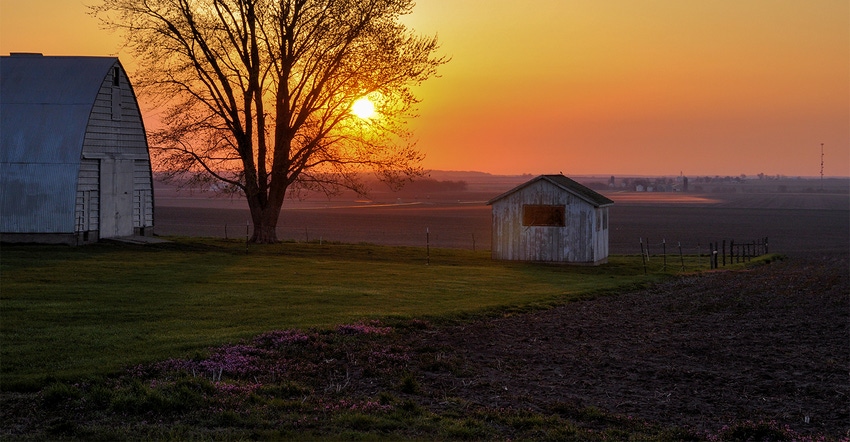
“So, about the university’s land lease situation …”
That question came up early on for Kim Kidwell, who became dean of the University of Illinois College of Agricultural, Consumer and Environmental Sciences last fall, as she embarked on a tour of the state.
Another meeting or two later, it came up again — and not favorably. Neither she nor then-new Chancellor Robert Jones, whose background is in crop physiology, knew what was going on, but they promised to find out. Kidwell came back to campus and learned that the board of trustees in 2006 had decided to rent all 10,000-plus university-owned farmland acres to the highest bidder, regardless of previous relationship; she also discovered a committee was in place to investigate the situation, and learned the committee had good recommendations about how to fix it.
“I sent it to the chancellor and said we need to look at making a change,” she says.
And so they did. In early September, U of I President Tim Killeen announced a new approach that emphasizes selecting the most qualified operator rather than just the highest bidder.
“Our new approach aligns more closely with farming practices and culture in Illinois, which emphasizes building strong relationships and careful stewardship of our fertile cropland,” Killeen told the board of trustees.
Ripples beyond campus?
The shift in policy is described as a relief, to both tenants and Illinois ag stakeholders.
Says Dwight Raab, head of Illinois Farm Business Farm Management (FBFM), there was much outcry when the high-bid decision was made 10 years ago.
“This is the land-grant institution in the state, and it’s looked to for advice and counsel by those in agriculture. With the shift to cash rent, it was perceived to be trend-setting,” Raab recalls.
“Today, I would say it’s trend-setting in the other direction — to know there are other factors involved in choosing a tenant, beyond rent. Stewardship encompasses more than just money.”
Jonathan Norvell, an accredited farm manager who manages the U of I’s farmland, says the university will look for tenants who are experienced and well-educated, and can steward the land in accordance with the university’s objectives. They’ll look hard at soil conservation records, drainage, fertility and the applicant’s local reputation — all similar standards for any professional farm manager.
Those applicants won’t submit a bid; as Killeen told the board of trustees, the most qualified applicant will be offered an operating contract at a predetermined rate based on local market conditions.
Norvell says they’ll establish that per-acre price by looking at other professionally managed farms in the area. They’ll also consider productivity indices, prices of similar farms, budgets and average costs from FBFM. The goal: Be at a good market rent but not a ridiculous market rent.
To be clear, the university is not immediately opening farms up. In the past, Norvell had to re-evaluate relationships and bids according to a calendar. Now, when a natural transition occurs — retirement, operator going a different direction, etc. — the university’s Agricultural Property Services office will publicly advertise the lease, assemble an evaluation committee and conduct interviews.
“Having a good tenant and a good landowner-tenant relationship is worth its weight in gold,” says Tim Koritz, chairman of the board of trustees and an anesthesiologist who also owns and manages several farms of his own. He also understands that the ag economy may mean farmers don’t make much for two to three years, and then might have a windfall in the fourth year — something the previous high-bid situation didn’t take into account. He says the new policy will work on a flexible-rent basis.
“The College of ACES is a big proponent of that, so why wouldn’t we do that for our tenants?” he asks. “The College of ACES at the University of Illinois is the best in the nation — possibly the best in the world, when you consider molecular and biological research — and we should set the standard of doing the right thing.”
Nuts and bolts
Land given to the university is owned by two different entities, and the owner depends entirely on how the land was given. The University of Illinois owns 10,319 acres across 17 farms. The University of Illinois Foundation owns 21 farms and 5, 839 acres. The foundation-owned land was never part of the highest-bidder process; it is managed solely by the foundation and professional farm managers. The university-owned land — the 10,319 acres — is what was subject to the 2006 board of trustees decision.
That decision, says Koritz, was a bad move and bad PR for the university.
“If you look at a graph of land donations, there’s a direct correlation in that decision and the drop-off in donations,” he says. The university uses the $2 million in annual income from donated farmland for student financial aid and capital improvements — a critical portion of its budget, given the state of Illinois’ budget crisis.
Koritz adds that while income may have jumped following the 2006 decision (one former trustee alleges it went from $1.8 million to $2.5 million in the first year), in the long term, the amount of farmland gifting went down. Grain prices also increased appreciably in that same time period, which may account for a significant portion of the income increase.
For Kidwell, announcing the change has been gratifying. Response from the agricultural community has been 100% positive, she reports, adding that she’s received tweets, emails and cards that say everything from “We’re grateful for this incredible shift” to “It took you long enough!”
And in the end?
“I hope people feel better about how we’re stewarding the land we have,” Kidwell says. “We’re trying to listen to people and head the college in a direction where we serve people well.”
About the Author(s)
You May Also Like






